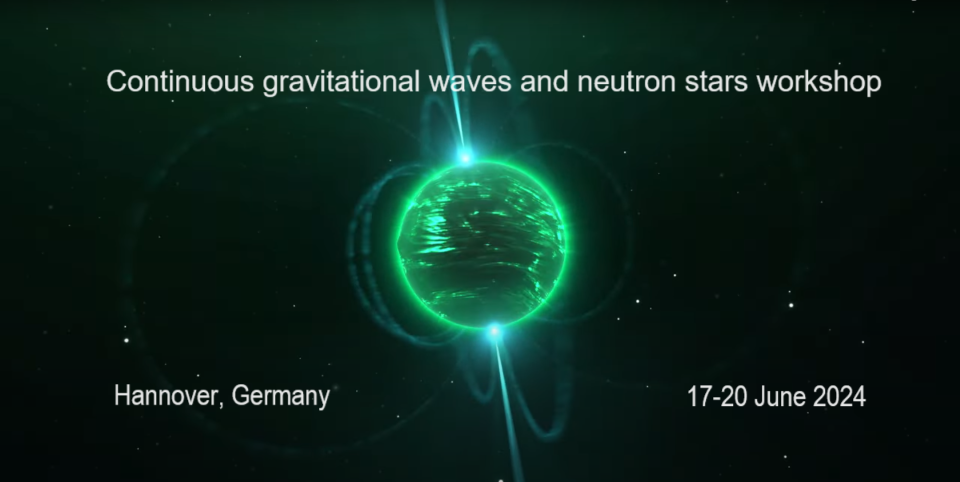The maximum-likelihood F-statistic, a classical tool in continuous-gravitational-wave (CW) analysis, can be represented as a Bayes-factor analytically marginalized over unphysical priors on the four signal amplitude parameters (h0, cosi, psi, phi0).
This makes the F-statistic Neyman-Pearson sub-optimal but computationally attractive, because four search parameters have been eliminated...
Searches for continuous gravitational waves targeted at known pulsars use pulsar timing observations to infer the phase evolution parameters of the CW signals they emit. We present a new method and implementation to obtain Bayesian posteriors on the amplitude parameters of the CW signal, combining modern Bayesian parameter estimation techniques with the well-established F-statistic framework....
Spinning neutron stars are sources of long-duration continuous waves that may be detected by interferometric detectors. We focus on long, but not infinite duration continuous wave signals when there are no electromagnetic observations to inform on the time of occurrence of the signal. We propose a search scheme to identify the signal duration and location of the signal in the data.
Dark compact objects, like primordial black holes, can span a large range of masses depending on their time and mechanism of formation. In particular, they can have subsolar masses and form binary systems with an inspiral phase that can last for long periods of time. Additionally, these signals have a slow increase of frequency, and, therefore, are well suited to be searched with continuous...
I will discuss the mini-EMRI systems that can be detected at LIGO,
which are ideal systems for detecting very light subsolar exotic compact
objects. The detection strategy and method are both similar to those
currently being used in CW searches. This talk is based on the paper
https://arxiv.org/abs/2205.10359.
Second-generation ground-based detectors, Advanced-LIGO and Advanced-Virgo, opened the window of gravitational wave astronomy. Over the past seven years, we witnessed GW astronomy begin with the first detection and rapidly emerge as a well-established field of transient astronomy. However, we have not detected any persistent gravitational wave (GW) signal. Scorpius X-1, the brightest low-mass...
All-sky searches for continuous gravitational waves (CWs) emitted by yet-unknown neutron stars pose high computational costs and are typically optimized for signal sensitivity through hierarchical pipelines. Initial search stages reduce the required accuracy in estimated signal parameters by accepting high false alarm rates. All recorded alarms are then analyzed for signal consistency in...
Continuous gravitational waves (CWs) are long-lasting gravitational waves emitted by rapidly spinning neutron stars that can be seen in the LIGO band. The most sensitive classical search method, the coherent matched filter search for continuous waves is not computationally feasible. Instead, a semi-coherent method is used for the search because it has a higher senesitivity than the coherent...
Convolutional neural networks (CNN) have an advantage in computational cost for the search of continuous gravitational waves (CGWs). We are developing a deep learning method for CGW searches. In our previous work, we proposed a method in which the doubly Fourier transformed strain data are used as inputs of CNN and assessed the effects of non-Gaussian artifacts. In this talk, we will talk...
The detection of gravitational waves (GWs) has opened new avenues for studying the universe and testing fundamental physics. As LIGO, Virgo and KAGRA undertake another observation run (O4) with an improved sensitivity, non-axisymmetric neutron stars emitting quasi monochromatic, long-standing GWs are expected to be within the detectors' sensitivity band. However, their detection in the...

